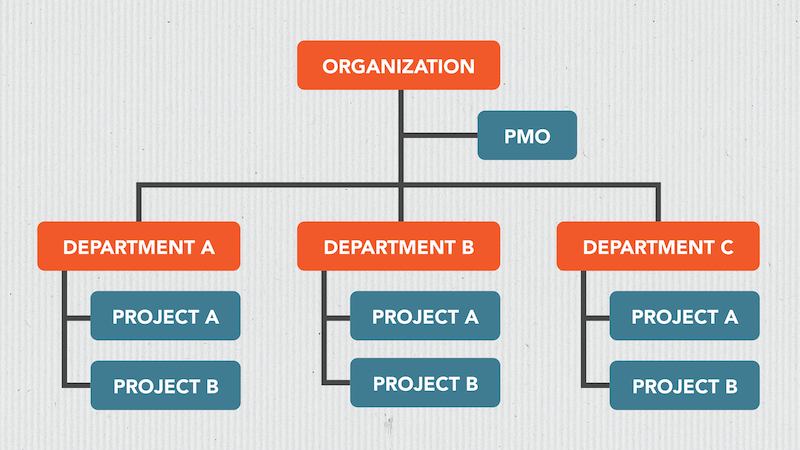

Image source: Getty Images
Project management offices, or PMOs, provide a myriad of benefits to organizations, the most noteworthy of which are better project control and consistency of quality. But do you even need a PMO?
In a survey released by Statista in November 2019, it was noted that 48.15% of organizations worldwide have multiple project management offices (PMOs), 34.7% have one, 15.7% have none, and the remaining 1.4% don’t know how to answer the question.
In a separate survey by the Project Management Institute, “80% of champions have a PMO and 72% indicate there is a high alignment of the EPMO [enterprise project management office] to organizational strategy.”
(Champions, in this context, are “organizations with 80% or more of projects being completed on time, on budget, meeting business intent, and having high benefits realization maturity.”)
Based on these numbers, it’s clear that many organizations recognize the significance of project management offices in project success, but what exactly are they?
Overview: What is a project management office (PMO)?
A project management office is an in-house group or department responsible for establishing and maintaining project management standards within an organization. The goal is to increase overall productivity throughout the company, produce high-quality project outcomes, and maximize return on investment.
The functions of a PMO team are specific to an organization’s focus, culture, background, and organizational influences, but overall, their roles and responsibilities include:
- Identifying project management best practices that will steer project teams in the right direction, especially when a project, task, or process isn’t turning out as expected
- Analyzing the needs of the company to identify the most fitting project management strategies
- Standardizing processes so teams have a time-tested and proven plan of action throughout the project’s life cycle — from initiation to project planning, from execution to closing
- Reviewing similar past projects to come up with ways to improve work performance
- Facilitating company-wide sharing of techniques, resources, and project management tools so teams can complete projects on time, on budget, and within the agreed-upon quality parameters
- Introducing repeatable, scalable processes for consistency and efficiency

What the structure of an organization with a PMO may look like. Image source: Author
Benefits of a good project management office
Establishing an internal PMO from the ground up sounds straightforward enough. That doesn’t mean it’s easy — particularly because setting one up requires changing established procedures and practices within the company.
But once you’ve successfully built a PMO, the benefits are usually worth the hassle.
1. Maintain quality consistency
The primary role of a PMO is to standardize project processes (including terminology), which means it also assumes a QA-type role to make sure teams consistently deliver quality projects.
This, of course, doesn’t mean taking over the project manager’s role, but instead teaming up with them to discuss problems and solutions and, ultimately, produce deliverables that clients and customers actually want.
2. Streamline processes
Perhaps one of the most important purposes of a PMO is simplifying complex workflows by eliminating unnecessary or cumbersome steps. With simple, standardized procedures, mistakes and delays are minimized.
This reduces overall time to market, which is an advantage, especially if you operate in an environment that’s constantly disrupted by rapid change.
3. Have more control over projects
Whether it’s project management for small business, marketing, or construction, there are a myriad of things to consider when working on a project: scope, resource allocation, schedule, budget, risks, changing customer expectations, vendor relations, project tracking, and so on.
It’s no wonder project managers often feel like they’re being pulled in several different directions all at once. With PMO standards in place, there’s a team and process you can count on for insights, knowledge, and techniques to keep projects on track.
4. Centralize project data
PMOs collect data across departments and projects. They extract best practices from successful projects and lessons learned from unsuccessful ones. They then make all these data and insights available to project managers to aid them in their decision-making functions.
The functions of a project management office (PMO)
Different PMOs have different jobs and responsibilities, depending on the business environment, the size of the organization, and the processes and systems in use. But some of the core PMO functions include:
1. Strategic planning
PMOs supervise project activities throughout the organization, which allow them to create PMO process plans that align with overall business objectives. This focuses project teams’ efforts, resources, talent, and technology toward achieving operational goals and solidifying the company’s purpose.
2. Resource management
Projects lacking the right resources are doomed to fail, and many organizations have limited resources. As such, resource management is critical for projects to stay on track and ensure that resources are maximized but not overallocated.
PMOs create databases, procedures, and systems for assigning project resources. They audit performances to identify any deficiencies and, in turn, develop training programs to fill skill gaps.
3. Mentoring and training
As organizations grow, the need for skilled and qualified project management professionals grows as well.
More-experienced project managers in senior roles can offer coaching and mentoring support specific to the technical aspects of certain projects, but PMOs can provide a full spectrum of support that includes linking projects with the organization’s business requirements.
4. Project support
PMOs offer related technical advice that project managers may need to make the right decisions for their projects, such as aggregate planning, budget estimating, schedule management, procurement, the right project management metrics to track, etc.
They also provide support on project management software and other related tools so teams can use them to their advantage.
The types of project management offices
There are many PMO types or models, but one way to classify PMOs is by gauging the level of influence and control they wield over an organization’s projects and teams.
1. Supportive PMO
A supportive PMO has low control over projects. It keeps track of lessons learned for future endeavors and provides best practices, templates, training, coaching, and access to data and documentation on demand — a knowledge repository, essentially.
This PMO type is best for organizations with a high success rate that only need a knowledge center for managing and distributing project information across the organization.
2. Controlling PMO
A controlling PMO exercises moderate control over projects. It requires teams to adopt certain project management frameworks, forms, processes, and policies.
A regular audit or review may be necessary to ensure compliance. This PMO type works for organizations that need specific project procedures and protocols followed.
3. Directive PMO
A directive PMO exercises full control over projects. It manages project execution, assigns resources, breaks down the project’s requirements, and collaborates with project managers, senior leaders, and other essential stakeholders so projects move according to plan.
This PMO type is best for large enterprises with a lot of projects to ensure consistency across departments and teams.
Does your company need a PMO?
To understand if your company could benefit from a PMO, here are some questions to consider asking:
- Are the different departments and segments of your company able to work together? If not and they’re still operating in silos, then you may need a PMO.
- Are your methodologies and procedures consistent across projects? If not, then you may need a PMO to standardize these things across the company.
- Are senior leaders, top executives, and key stakeholders happy with the way projects are managed and run? If not, a PMO can provide advice on best practices and industry standards for your next projects.
- Are you in the process of implementing strategy changes within the organization? If so, you may need a PMO to provide strategic direction.
- Do you consistently work on large projects with significant impact and investment? If you do, you’re likely to benefit from the experience and expertise of a PMO.
- Is project visibility a problem in your organization? If it is, you may need a PMO to centralize data tracking and analysis, project performance monitoring, and resource management.
Final word on PMOs
If you’re managing multiple projects consistently as an organization or have been delivering too many failed projects for one reason or another, a project management office can be beneficial in many ways.
PMOs do more than just provide on-demand data and documentation support to project managers and their teams.
They also coordinate with various departments regarding the best use of the organization’s resources, standardize systems and processes, offer advice on the best methodologies for specific projects, facilitate inter-project communication to share best practice and lessons learned, and align project goals with the company’s overall objectives.